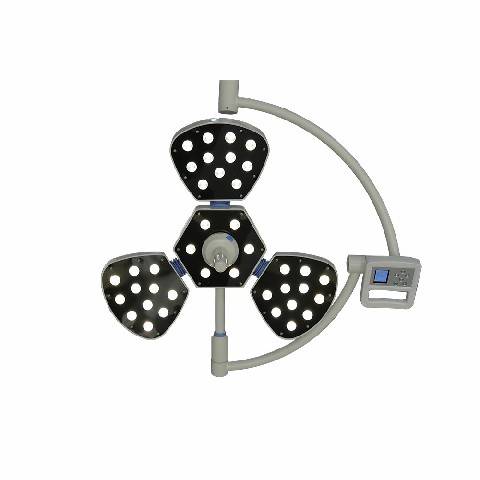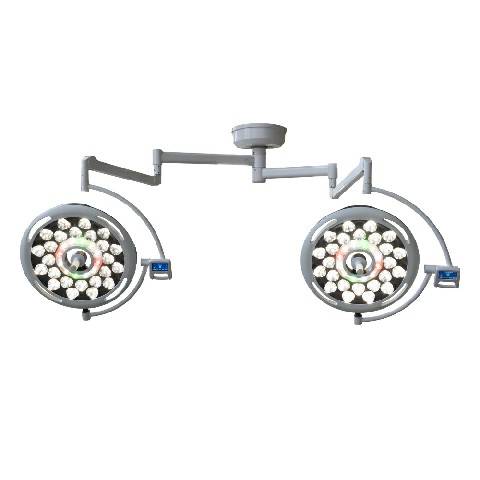Indirizzo
304 Il cardinale nord S.
Dorchester Center, MA 02124
Ore di lavoro
Dal lunedì al venerdì: 7:00 - 19:00
Fine settimana: 10:00 - 17:00
Indirizzo
304 Il cardinale nord S.
Dorchester Center, MA 02124
Ore di lavoro
Dal lunedì al venerdì: 7:00 - 19:00
Fine settimana: 10:00 - 17:00

Operating room surgical lights are a crucial component in any surgical setting. They provide the illumination necessary for precise procedures and help ensure optimal visibility and accuracy during operations. Choosing the right surgical lights involves understanding various features and functionalities that contribute to their effectiveness. In this comprehensive guide, we will explore the top features to look for in operating room surgical lights, helping you make informed decisions for your surgical facility.
Benvenuti nel mio blog!
Prima di immergerci nei contenuti, mi piacerebbe che ti unissi a me sulle mie piattaforme social, dove condivido altre intuizioni, interagisco con la community e pubblico aggiornamenti. Ecco come puoi metterti in contatto con me:
Facebook: https://www.facebook.com/profile.php?id=100071234835011
LinkedIn: https://www.linkedin.com/company/74943205/admin/dashboard/
YouTube: www.youtube.com/@shandongexpertmedicalequip4695
TikTok: www.tiktok.com/@expertmedical
Ora, iniziamo il nostro viaggio insieme. Spero che tu trovi il contenuto qui perspicace, coinvolgente e prezioso.

Operating room surgical lights are a crucial component in any surgical setting. They provide the illumination necessary for precise procedures and help ensure optimal visibility and accuracy during operations. Choosing the right surgical lights involves understanding various features and functionalities that contribute to their effectiveness. In this comprehensive guide, we will explore the top features to look for in operating room surgical lights, helping you make informed decisions for your surgical facility.
Brightness is one of the most critical factors in operating room surgical lights. Adequate illumination is essential for surgeons to see clearly and perform intricate procedures accurately. Surgical lights should offer high intensity to ensure that all areas of the surgical field are well-lit without shadows or dark spots.
Considerazioni chiave:
Modern surgical lights use various technologies to achieve optimal brightness and illumination quality:
Color temperature affects how colors are perceived under the light. In an operating room, the ideal color temperature ensures that tissues and structures appear as they would in natural daylight, aiding in accurate diagnosis and surgical precision.
Optimal Color Temperature:
The CRI measures how accurately a light source displays colors compared to natural light. A high CRI (above 90) is crucial for surgical lighting, as it allows for accurate color differentiation and assessment.









Adjustability is key for surgical lights to provide optimal illumination angles and coverage. Lights should be flexible enough to accommodate different positions and angles, ensuring that the surgical team can achieve the best lighting conditions for any procedure.
Features to Look For:
Surgical lights should be compatible with operating tables, allowing for seamless adjustment without interfering with the surgical team’s space or workflow.
Shadow reduction is crucial in surgical lighting to ensure that the surgical field is uniformly illuminated. Good surgical lights should minimize shadows caused by the surgeon’s hands, instruments, or the light’s own structure.
Key Technologies:
Uniform light distribution ensures that all areas of the surgical field are illuminated equally, reducing the need for frequent adjustments and improving overall visibility.

Operating room surgical lights are subjected to frequent use and must be durable enough to withstand constant operation. Quality construction and materials are essential for long-term reliability.
Features to Ensure Durability:
Regular maintenance is necessary to ensure that surgical lights function properly. Choose lights that are easy to clean and maintain, with accessible components for servicing.
Maintenance Tips:
| Caratteristica | Descrizione | Importanza | Considerations |
|---|---|---|---|
| Brightness and Illumination | Lumens output and adjustable brightness levels | Essential for clear visibility | Higher lumens and adjustable settings |
| Temperatura di colore | Range of 4000K to 5000K for optimal visibility | Affects color perception | Neutral to cool white is ideal |
| Indice di resa cromatica (CRI) | Measure of color accuracy | High CRI (above 90) is preferred | Ensures accurate color differentiation |
| Regolabilità e posizionamento | Articulating arms, rotation, and tilt features | Provides flexibility in lighting | Integration with operating tables |
| Shadow Reduction and Uniformity | Multiple light sources and shadow control features | Reduces shadows and ensures uniform light | Uniform distribution is key |
| Durata e manutenzione | Robust construction and ease of cleaning | Ensures long-term reliability | Choose durable materials and easy maintenance |
Selecting the right operating room surgical lights is crucial for ensuring optimal performance in the surgical environment. By focusing on features such as brightness, color temperature, adjustability, shadow reduction, and durability, you can make an informed decision that enhances surgical precision and overall efficiency. Investing in high-quality surgical lights not only supports the surgical team but also contributes to better patient outcomes.
The ideal brightness for operating room surgical lights is typically measured in lumens. Surgical lights should offer high lumens output to ensure clear visibility and reduce shadows. Generally, a brightness of at least 120,000 lumens is recommended for optimal illumination.
Color temperature affects how colors are perceived under the light, which is crucial for accurate tissue assessment and surgical precision. A color temperature between 4000K and 5000K is preferred, as it closely mimics natural daylight and enhances visual clarity.
A high CRI (above 90) ensures that colors are rendered accurately under the light, which is essential for distinguishing different tissues and structures. A high CRI helps surgeons make accurate assessments and improves the overall quality of the surgical procedure.
To reduce shadows, look for surgical lights with multiple light sources and advanced shadow control features. These technologies help minimize shadows and provide uniform illumination across the surgical field.
Ensure that surgical lights are constructed from robust materials and have a sealed design to prevent contamination. Choose lights with easy-to-remove covers for cleaning and components that facilitate regular maintenance and servicing.